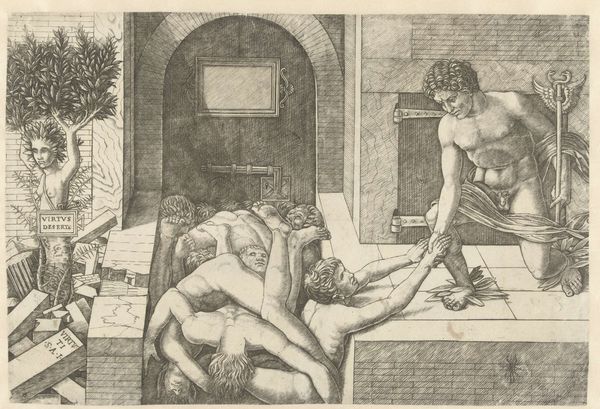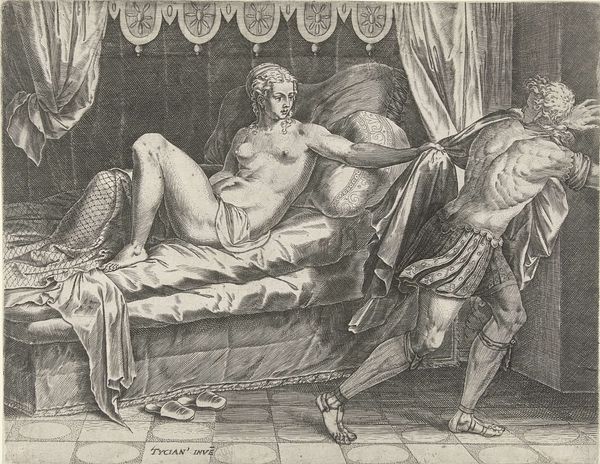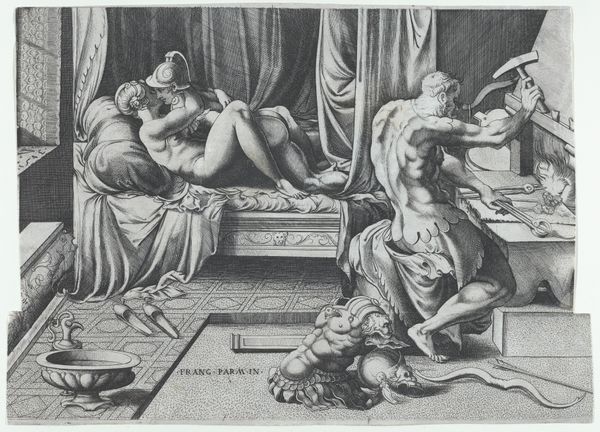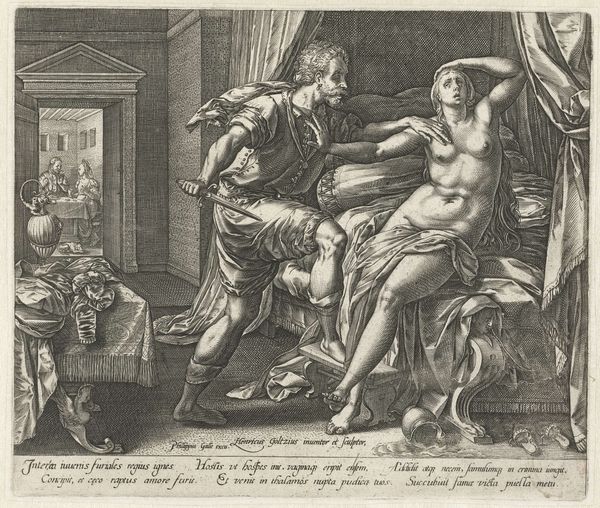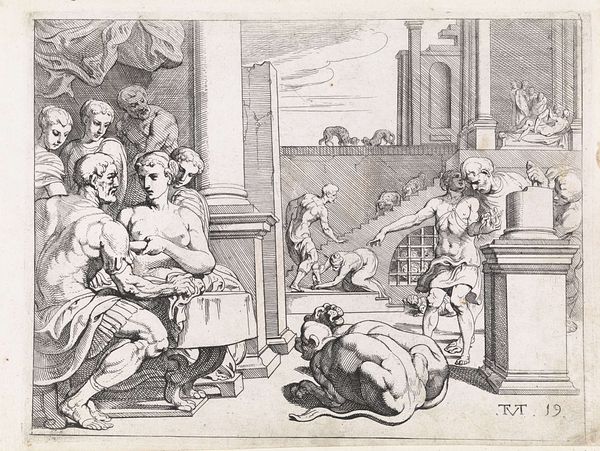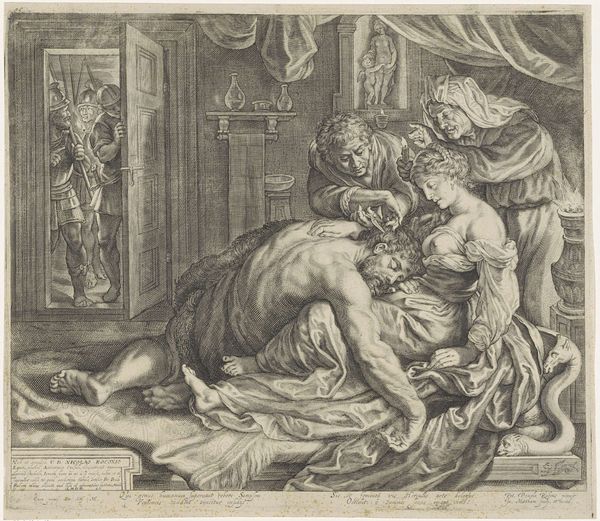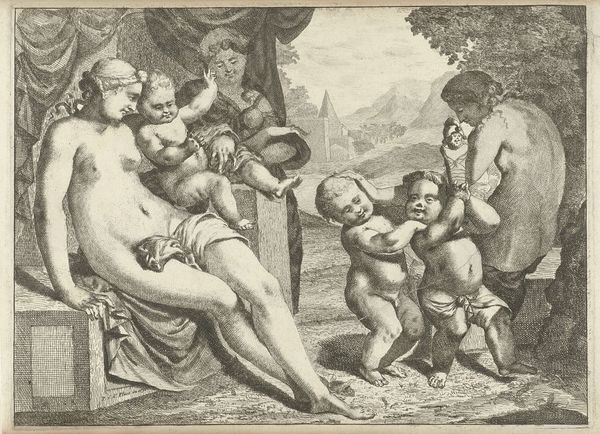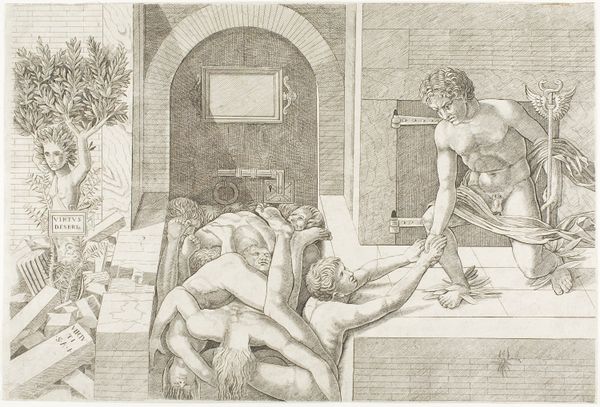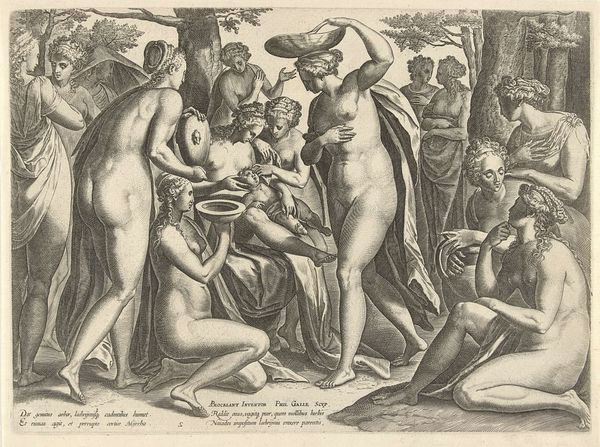
engraving
#
allegory
#
baroque
#
old engraving style
#
figuration
#
history-painting
#
engraving
#
erotic-art
Dimensions: height 221 mm, height 301 mm
Copyright: Rijks Museum: Open Domain
Curator: Look closely at this engraving, "Aristotle and Phyllis," created between 1588 and 1592 by Pieter de Jode I, currently held in the Rijksmuseum collection. Editor: The immediate sense I get is a study in contrasts – light and shadow, virtue and…something less so. The textures, particularly on Phyllis’ drapery, are striking given the medium. Curator: Indeed. The print illustrates a popular medieval allegory, depicting the philosopher Aristotle being seduced and ridden like a horse by Phyllis. Consider the power dynamics at play in the late 16th century: This image reinforced ideas about the dangers of female wiles undermining male wisdom and authority, something the rising merchant class might have considered of philosophical debates they were increasingly in position to support. Editor: The composition certainly reinforces that. Phyllis is quite literally on top, her pose dominant, while Aristotle, rendered with such careful lines to suggest age and vulnerability, is being led. And there’s even a student to see that their knowledge is in danger of losing power in that setting. Curator: It reflects the sociopolitical climate of the time, subtly reinforcing existing hierarchies. The eroticism, while present, serves to highlight the perceived threat to the established intellectual order, however that seems to stand in opposition to the rise in support from commoners and business. Editor: I agree, this reading takes advantage of Baroque pictorial language. The scene employs the open book, globe, and candle that appear as signifiers for a wide ranging perspective—knowledge, that become undermined. It underscores the reversal of roles and values occurring right before our eyes. Curator: I find it intriguing how artists adapted such stories for moralizing narratives. This work shows not just personal failing, but the dangers posed by women's disruptive social influence on tradition as well. Editor: I leave feeling a discomfort as my contemporary expectations bump into a scene about to be corrupted—as knowledge itself hangs in the balance of dominance. Curator: Considering the time and implications present, what is at stake, and what should endure may serve as timeless lessons.
Comments
No comments
Be the first to comment and join the conversation on the ultimate creative platform.
